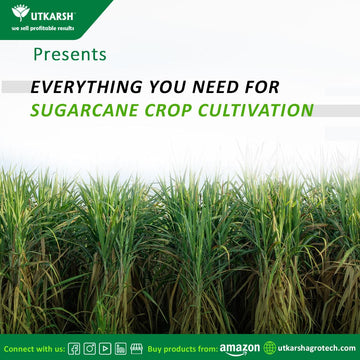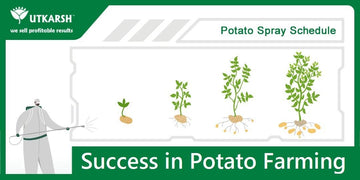
Soil preparation creates fertile agricultural land with optimum soil that is ready for farming. The following are the vital reasons for the need for efficient and proper land preparation.
- To produce the ideal circumstances for seed germination and young plant germination.
- To add to the soil’s content.
- To effectively control weeds.
- Creating a standard structure in the soil and sowing seeds to the depth of sowing in the surface layer.
Steps involved in Land Preparation
Loosening of Soil – Land Preparation for Ploughing
The soil is loosened by digging during this stage. We can loosen the soil and carry the soil’s rich nutrients to the top by ploughing.
It also enhances air circulation and allows plant roots to penetrate deeper into the soil by increasing soil air thereby making the plant stronger.
Loose soil also allows for improved root ventilation, allowing them to breathe more freely. It promotes the growth of microorganisms and insects that aid digestion while also adding nutrients and humus to the soil.
Ploughing also has other advantages, such as weed control, manure incorporation, and the avoidance of contagious pathogens and pests.
- Tools used for Ploughing
Plough
Ploughing tools include wooden or iron ploughs and hoes, which are used to uproot weeds and break up the soil.
Ploughs were usually drawn by oxen, although in modern times, tractors are employed.
Hoe
The hoe is an old agricultural implement as well mostly used to weed the garden and excavate the dirt.
It typically carries a long wooden stick with an iron plate attached to one end.
In ancient times, the hoe was employed for tailing, but nowadays it is solely used to eliminate weeds.
Clod Size Reduction for Land Preparation
To establish a granular soil structure in the final seedbed, a clod-breaking procedure is required.
Clods are broken with a tine cultivator and a disc harrow.
In most cases, these are used after one ploughing pass. When the fields are clear and free of plant leftovers from the previous crop, direct harrowing or cultivator operations are also used.
Rotavators and other power-driven equipment dissolve clods throughout a wide range of soil moisture, resulting in uniform and fine-sized clods or aggregates in the seedbed.
Cultivator
It entails driving using a tractor to dig the dirt. It’s also used by farmers to eradicate weeds and dig out undesired plants.
Although the Cultivator is more expensive than traditional methods, it saves a significant amount of time and effort.
Disc Harrow
A disc harrow is a type of farm equipment that consists of a deep digging harrow with a row of concave metal discs as cutting blades.
It is used to till the soil before planting any type of seed or crop, as well as to cut off any unwanted weeds or plants.
For optimal benefit, disc harrowing is usually done before and after ploughing.
Rotavator
A rotavator is a type of tillage machine used to prepare the soil for seeding.
When compared to conventional tillage, it provides faster seedbed preparation and lower draught.
Because of its rotational speed, the rotavator’s rotating blades contact the soil surface and fling soil upward, pulverising soil by breaking clods.
Levelling of Land Preparation
The topsoil is extremely loose once the field has been shaken. There’s a good chance that high winds or rain will wash away the soil above.
After that, the dirt must be re-levelled to ensure a solid foundation. The levelling of the soil is accomplished with a tool known as a leveller. After ploughing, the earth is levelled to help with even distribution.
Water distribution is also aided by levelling, as it prevents logging during irrigation which is done with a wooden or iron board.
Manuring of Land Preparation
The fertiliser and manure are administered to the next phases of cultivation after ploughing and levelling.
Manure is used to restore nutrients in the soil, allowing the crop to grow properly. Important nutrients such as nitrogen, phosphorus, and potassium must be given to the soil in order to enhance yields. In addition to these, manures also give a variety of biofertilizers and organic fertilisers.
Compost, bio-fertilizers, and biopesticides are added on a regular basis to help to improve soil structure, moisture retention, aeration, and water infiltration.
- Utkarsh Microbes @ 2-4 kg, VAMoz – P @ 2-3 kg/acre, Marvelz – G – 10 kg/acre along with 5-15 MT of properly composted organic manure is highly recommended.
- One can also add basal chemical fertilizers like DAP, and MOP along.
उत्कर्ष के संग आपकी हर फसल होगी सफल।
Available on UtkarshAgro.com | Amazon | Flipkart | AgriBegri | Bighaat | Moglix | Agrosiaa | Toolsvila | Agri junction | Krishisuvidha | Ecotika | Shopee | Bazzu.in
Visit Website: https://utkarshagro.com/
You can also Shop from: https://www.badikheti.com/utkarsh
𝐂𝐎𝐃 𝐚𝐧𝐝 𝐄𝐌𝐈 𝐨𝐩𝐭𝐢𝐨𝐧𝐬 𝐚𝐫𝐞 𝐧𝐨𝐰 𝐚𝐯𝐚𝐢𝐥𝐚𝐛𝐥𝐞.
May you have the best yield ever! Feel free to contact Utkarsh for any doubts and advice.
If you have any further queries, feel free to reach out to us on
Call: 8866543678 or chat: http://wa.me/918866543678
Call: 9924864422 or chat: http://wa.me/919924864422
Call: 9664961571 or chat: http://wa.me/919664961571
Landline: 02621-255972
Visit our website: https://utkarshagro.com/
Email ID: rd@utkarshagro.com
Stay connected with us to learn more tips and tricks. All you have to do is follow us here:
Facebook: https://www.facebook.com/utkarshagrochem/
Instagram: https://www.instagram.com/utkarshagrochem/
YouTube: https://www.youtube.com/c/UtkarshAgrochem
Twitter: https://twitter.com/UAgrochem
LinkedIn: https://www.linkedin.com/company/utkarsh-agrochem-pvt-ltd/
Pinterest: https://in.pinterest.com/utkarshagrochemsocial/
Written by:
Pratik Sinha
Affiliate Writer with Monkey Ads









